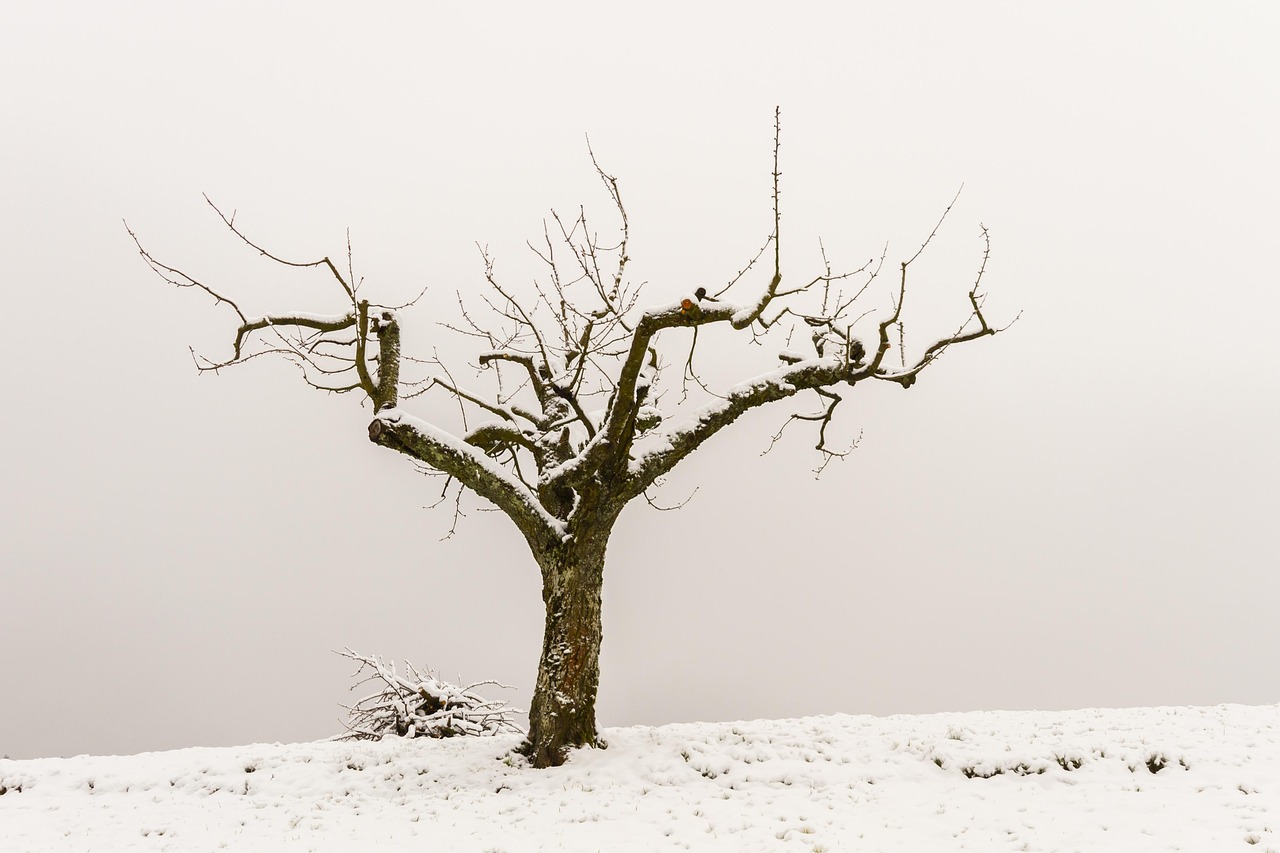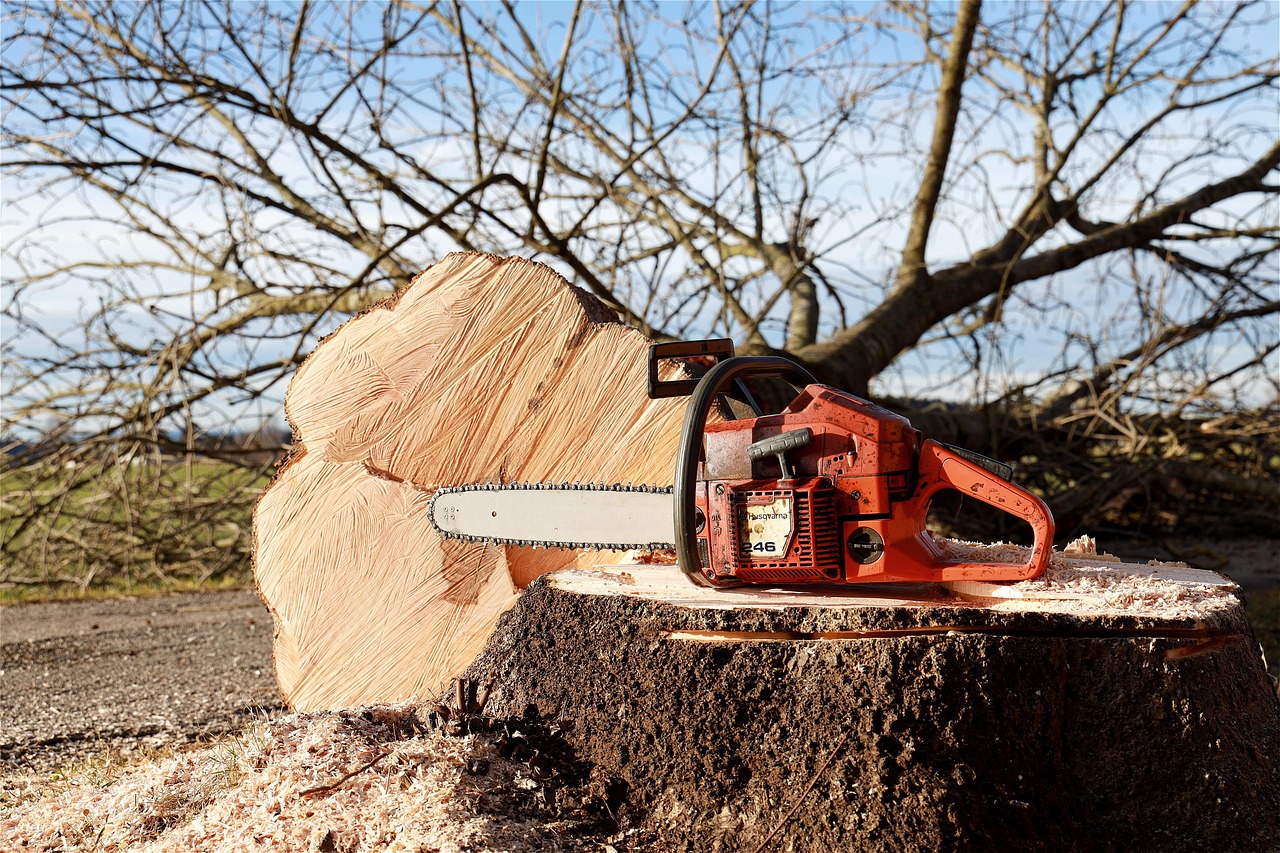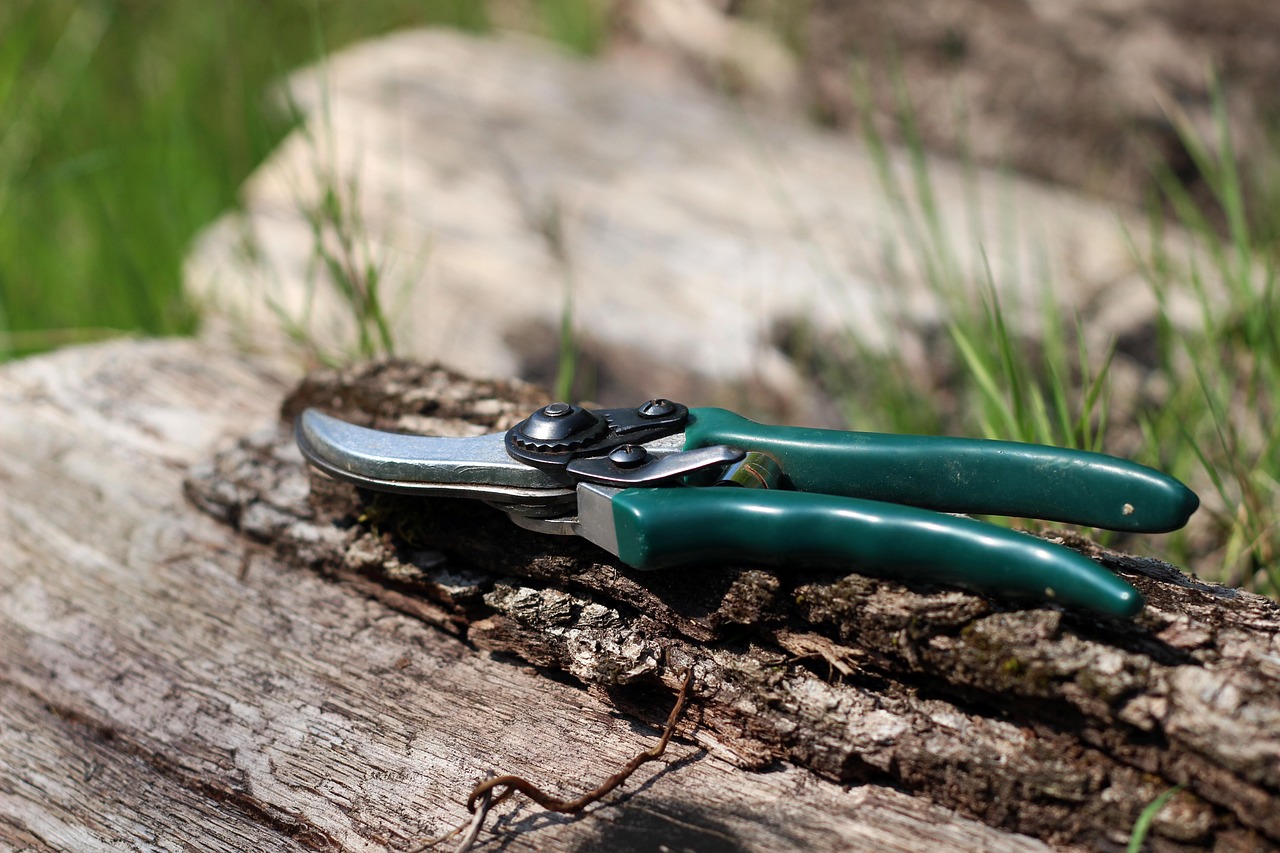To restore the shape of overgrown trees, prune selectively during dormancy. Focus on removing dead, damaged, or crossing branches. Aim for a balanced canopy by cutting back excessive growth while maintaining the tree’s natural form.
Overgrown trees can become a challenge for many homeowners and gardeners. While trees add beauty and value to properties, their unchecked growth can lead to a host of problems. These include reduced sunlight for surrounding plants, increased susceptibility to pests and diseases, and potential hazards from falling branches. Therefore, understanding how to properly prune trees is essential for maintaining their health and aesthetic appeal.

Pruning is the practice of removing specific parts of a tree, such as branches, buds, or roots. It encourages healthy growth and helps maintain the desired shape and size of the tree. For overgrown trees, pruning can be particularly beneficial as it allows for better air circulation and sunlight penetration throughout the canopy. This not only enhances the tree’s overall health but also ensures that it continues to thrive in its environment.
Understanding Tree Growth Patterns
Before embarking on pruning, it is crucial to understand how trees grow. Trees typically grow from their tips, which means that the uppermost branches are the most vigorous. As these branches grow, they can overshadow lower branches, leading to uneven growth. Additionally, trees often develop a natural shape based on their species, which can be altered when they become overgrown.
The growth pattern of a tree can be influenced by several factors, including species, environment, and the availability of resources like sunlight and water. Different species have unique growth habits; some may spread wide while others grow tall and narrow. Recognizing these characteristics will aid in making informed pruning decisions.

| Tree Species | Typical Growth Habit | Best Time to Prune |
|---|---|---|
| Maple | Wide canopy | Late winter to early spring |
| Oak | Tall and upright | Late fall to early winter |
| Pine | Narrow and conical | Late winter |
| Cypress | Pyramidal shape | Early spring |
Knowing the right time to prune is also essential. Most trees benefit from pruning during their dormant period, typically in late winter or early spring before new growth begins. Pruning at this time minimizes stress on the tree and allows for quick recovery as it enters the growing season.
Essential Pruning Techniques
When it comes to pruning overgrown trees, several techniques can help achieve the best results. Each method serves a specific purpose and can contribute to restoring the tree’s natural shape.
Thinning Cuts
Thinning cuts involve removing branches at their point of origin. This technique helps reduce the density of the canopy without altering the overall shape. Thinning promotes better air circulation and light penetration, which is vital for healthy growth.

Heading Cuts
Heading cuts involve shortening branches back to a bud or lateral branch. This technique encourages new growth from the cut point and can help control height and width. However, it is essential to use this technique judiciously, as excessive heading can lead to weak growth.
Reduction Cuts
Reduction cuts are used to decrease the size of a branch while maintaining its natural form. This involves cutting back to a lateral branch or bud that can support future growth. Reduction cuts are particularly useful for managing large trees that have outgrown their space.
Tools for Pruning
Having the right tools is crucial for effective pruning. Using sharp, clean tools will ensure smooth cuts that minimize damage to the tree. Here are some essential tools:

- Bypass Pruners: Ideal for small branches up to ¾ inch thick.
- Loppers: Suitable for branches up to 2 inches thick, providing leverage.
- Saws: Needed for larger branches; choose a pruning saw or chainsaw depending on size.
- Safety Gear: Gloves, safety glasses, and hard hats are essential for protection.
Always remember to disinfect tools between cuts, especially when working with diseased trees. This practice helps prevent the spread of pathogens and ensures that each cut promotes overall tree health.
In addition to proper tools, technique plays a significant role in successful pruning. Always make cuts at a slight angle just above a bud or branch to encourage healthy regrowth. Avoid leaving stubs, as they can become entry points for pests and diseases.
Timing Your Pruning for Optimal Results
The timing of your pruning efforts can significantly impact the health and appearance of your trees. Pruning at the wrong time can stress the tree or result in poor growth. Understanding the best times to prune various types of trees is essential for successful restoration of shape.
Seasonal Considerations
Generally, the best time to prune most trees is during their dormant season, which occurs in late winter to early spring. During this time, trees are not actively growing, and pruning can stimulate new growth as the tree comes out of dormancy. However, there are exceptions based on tree species:
- Spring-Flowering Trees: Prune these after they bloom in late spring. This ensures you do not remove flower buds.
- Summer-Flowering Trees: Prune these in late winter or early spring before new growth starts.
- Deciduous Trees: Most deciduous trees benefit from pruning during dormancy.
- Evergreens: Thin out during late winter for a more balanced shape.
In addition to seasonal considerations, it is wise to monitor weather conditions. Avoid pruning during wet or windy conditions, as this may lead to increased risk of disease or accidents.
Assessing Tree Health Before Pruning
Before starting any pruning work, it is crucial to assess the health of the tree. Healthy trees can recover more quickly from pruning, while stressed or diseased trees may require a different approach.
Signs of Tree Health
Look for the following signs to assess the overall health of your tree:
- Leaf Color: Healthy leaves are typically vibrant and green. Dull or discolored leaves may indicate stress.
- Branch Integrity: Check for brittle branches that snap easily, which can suggest underlying problems.
- Pests or Diseases: Inspect for pests like aphids or signs of diseases such as blight or fungus.
- Growth Patterns: Uneven growth may signify stress or competition from other plants.
If any concerning signs are present, consider consulting a certified arborist before proceeding with pruning. An expert can provide insights and recommend additional care if necessary.
Pruning Techniques for Different Tree Shapes
Different trees have unique shapes and structural characteristics that require tailored pruning approaches. Understanding these differences will help you restore the desired shape effectively.
Upright Trees
Trees that grow tall and narrow, like oaks and pines, require specific techniques to maintain their height while preventing overcrowding. Use the following techniques:
- Remove Lower Branches: This helps improve air circulation and directs energy toward upper growth.
- Thinning Cuts: Focus on selective thinning of branches to reduce weight and prevent breakage.
- Heading Cuts: If necessary, use heading cuts to shorten branches and encourage bushier growth at the top.
Wide Canopy Trees
Trees with broad canopies, such as maples and willows, require careful management to maintain their shape while avoiding excessive density.
- Crown Thinning: Remove a percentage of branches from the interior of the canopy to allow sunlight to reach lower branches.
- Lateral Branch Reductions: Shorten long lateral branches to enhance the tree’s shape and balance.
- Aim for a Balanced Canopy: Ensure that the tree maintains an even shape by distributing cuts evenly around the canopy.
Aftercare Following Pruning
After pruning, it is essential to provide proper aftercare to support the tree’s recovery and promote healthy growth. Here are some key practices:
- Watering: Ensure that the tree receives adequate moisture, especially during dry spells, to help it recover from pruning stress.
- Mulching: Apply mulch around the base of the tree to retain moisture and suppress weeds. Be careful not to pile mulch against the trunk.
- Monitoring Growth: Keep an eye on new growth after pruning. This will help you identify any potential issues early on.
- Avoid Fertilizing Immediately: While it might be tempting to fertilize after pruning, it is best to wait until new growth appears.
Caring for your tree after pruning will ensure that it continues to thrive and develop a strong structure. By implementing these practices, you can promote robust growth and maintain a beautiful appearance for years to come.
Common Mistakes to Avoid When Pruning
While pruning is essential for maintaining the shape and health of overgrown trees, there are several common mistakes that can lead to more harm than good. Identifying these pitfalls will help ensure that your pruning efforts are effective and beneficial.
Over-Pruning
One of the most significant mistakes is over-pruning, which can weaken the tree and lead to stress. Over-pruning can result in:
- Loss of Foliage: Removing too many leaves can reduce the tree’s ability to photosynthesize, impacting its energy levels.
- Structural Weakness: Excessive cuts can lead to an unbalanced structure, making the tree more prone to wind damage.
- Increased Sunlight Exposure: Removing too many branches can expose lower leaves to intense sunlight, leading to sunburn.
To avoid over-pruning, always assess how much you are removing and aim for gradual changes rather than drastic reductions.
Ignoring Tree Species Specifics
Each tree species has its own growth habits and pruning requirements. Ignoring these specifics can result in improper cuts. For example:
- Flowering Trees: Pruning at the wrong time can remove flower buds, reducing blooms for the season.
- Pines: These trees should not be pruned in late winter, as it can lead to needle drop.
- Fast-Growing Species: Some species require more frequent trimming to maintain shape; neglecting this can lead to overgrowth.
Researching the specific needs of your tree species will lead to more successful pruning outcomes. Consider consulting resources or local arborists for guidance.
Using Proper Techniques for Different Scenarios
Understanding when and how to apply different pruning techniques is crucial for achieving optimal results. Here are some scenarios where specific techniques excel:
Restoring Shape After Severe Overgrowth
If your tree has become severely overgrown, a more aggressive approach may be necessary. Use the following techniques:
- Crown Reduction: This involves reducing the overall size by cutting back large branches. Aim to cut back to a lateral branch that can support new growth.
- Directional Pruning: Direct the growth of branches toward desired areas by cutting back towards a bud that faces outward.
- Selective Thinning: Remove selective branches to allow sunlight and air circulation, promoting healthy regrowth.
Maintaining Shape in Established Trees
For trees that require ongoing maintenance rather than drastic restoration, focus on light pruning methods:
- Deadwooding: Regularly remove dead, diseased, or damaged branches to improve overall health.
- Tip Pruning: Lightly trim the tips of branches to encourage bushier growth without altering the structure significantly.
- Seasonal Trims: Conduct minor trims throughout the growing season to maintain shape and control size.
The Importance of Safety Practices During Pruning
Pruning can be a physically demanding task that comes with risks. Adopting safety practices is essential for preventing injuries while ensuring effective work.
Personal Protective Equipment (PPE)
Wearing appropriate PPE can protect you from potential hazards associated with pruning:
- Gloves: Protect your hands from cuts and scrapes.
- Safety Glasses: Shield your eyes from flying debris when cutting branches.
- Hard Hats: Wear hard hats if working near tall trees or when using ladders.
- Non-Slip Footwear: Ensure you have proper footwear with good grip when climbing or standing on unstable ground.
Ladder Safety
If you need to use a ladder for high branches, follow these important guidelines:
- Use a Stable Ladder: Ensure your ladder is on a flat surface and stable before climbing.
- Avoid Reaching Too Far: Always keep your body centered on the ladder and avoid leaning too far to one side.
- Have a Spotter: If possible, have someone hold the ladder while you prune.
Understanding Tree Growth Responses After Pruning
Trees respond differently to pruning based on various factors such as species, age, and health. Understanding these responses can help you make informed decisions about future pruning activities.
Post-Pruning Growth Patterns
After pruning, you may observe several growth patterns:
- Suckering: Some trees may produce suckers or shoots near the base or from cuts, which may need to be managed.
- Budding: Healthy trees will typically produce new buds along cut branches as they recover.
- Growth Rate Variations: Different species may show varying rates of recovery; some may bounce back quickly while others take longer.
Monitoring these growth responses will help you adjust your care practices accordingly. Regular observation is key to maintaining a healthy tree structure over time.
Additional Tips for Successful Tree Pruning
In addition to the techniques and practices already discussed, there are several more tips to consider that can enhance your tree pruning experience. Implementing these additional strategies can further ensure the health and aesthetics of your trees.
Consider the Tree’s Environment
The surrounding environment plays a crucial role in how a tree responds to pruning. Here are some factors to keep in mind:
- Soil Quality: The quality of the soil affects root health. Well-draining, nutrient-rich soil supports better recovery after pruning.
- Light Conditions: Ensure that the tree receives adequate sunlight after pruning. This will help promote new growth and maintain its shape.
- Competing Vegetation: Be aware of other plants nearby. They may compete for nutrients and water, affecting the tree’s recovery.
Utilize Technology for Enhanced Planning
Advancements in technology can aid in effective tree management. Consider these tools:
- Tree Inventory Software: Use software to track the health and pruning history of your trees, allowing for better planning of future maintenance.
- Drones: Drones can provide a bird’s-eye view of your trees, helping you assess overall health and structure.
- Apps for Identification: Use mobile apps that help identify tree species and their specific pruning needs.
When to Seek Professional Help
While many homeowners can manage basic pruning tasks, certain situations warrant professional intervention. Consider hiring an arborist if you encounter:
- Large Trees: If the tree is too tall or large for safe pruning, a professional is best equipped to handle it.
- Disease Issues: If you suspect a disease or pest problem, an arborist can diagnose and suggest treatment options.
- Structural Concerns: For trees with significant structural issues or hazards, seek expert assistance.
Final Thoughts
Restoring the shape of overgrown trees through proper pruning is a rewarding endeavor that enhances both the aesthetic appeal and health of your landscape. By understanding essential techniques, timing, and aftercare practices, you can ensure your trees thrive and maintain their beauty for years to come.
Regular maintenance, informed by the unique characteristics of each tree species, will lead to stronger, healthier trees. Remember that each cut you make is a step towards enhancing the tree’s future growth potential. Whether it’s managing overgrowth or simply maintaining shape, taking time to understand and implement best practices will yield the best results.
In summary, successful tree pruning requires knowledge of techniques, timing, species-specific needs, and safety precautions. By avoiding common mistakes and recognizing when to seek professional help, you can achieve the desired outcomes while ensuring the longevity and vitality of your trees. Embrace the art and science of tree pruning as a valuable skill that benefits your landscape and environment.
